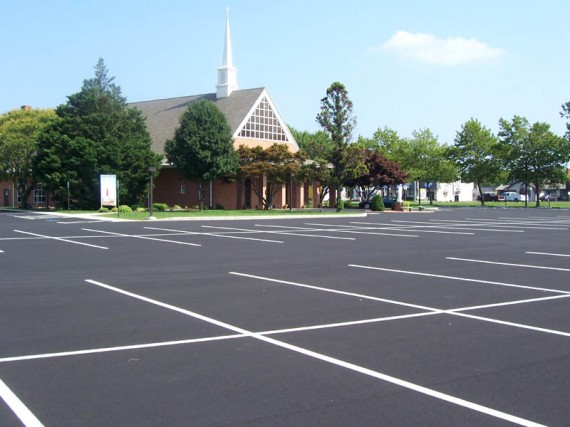There are many things a church could be doing with the money it receives.
One of these is that the church could become a church that gives.

The Church that Gives
Rather than spending the majority of our income on buildings, salaries, and church programs, so that only what is left over goes to help the poor and needy, maybe churches could reverse this practice, so that a majority of the money that a church receives goes toward feeding the hungry, helping the poor, and serving those who are outcast and rejected in society.
Though there is no hard and fast rule, it seems that if loving and serving others really is a priority for our church, our church budget should reflect this by setting aside a majority (51% or more) of the church income for such service-oriented ministry. Such a move would be impossible for most established churches, but they could begin to move in that direction by portioning off an ever-increasing percentage of their annual budget for serving the community in this way.
Majority to Missions?
I am aware of several churches that actually do this, but most of them are in the mega-church category, and have annual operating budgets of $5 million or more. These churches often pride themselves in giving 51% of their budget to “missions.” This is wonderful, and is to be encouraged and praised. And yet I sometimes think that for churches like these, 51% is not nearly enough. They still spend thousands of dollars a month to air-condition their empty building. They spent tens of thousands of dollars a year on new choir robes, colorful bulletins, professional cleaning for the padded pews, and on and on it goes.
Furthermore, when you begin to look at the 51% of the money that goes toward “missions” it is sometimes shocking to discover how loosely some churches define “missions.” Oftentimes, the church will have a “Mission’s Pastor” whose salary comes out of the mission’s budget. Frequently, the church will subsidize the expenses for the youth group to go on several “mission trips” per year, which usually amount to little more than a sight-seeing trip. I know of one mega church that boasts about how they give 51% of their income to missions, but out of their budget, they pay for all the housing and living expenses for half-a-dozen “Stateside missionaries.”
I definitely agree that the Unites States need people to live the Gospel and share it with others, but I am not sure that it is a good use of a church budget to pay people a full-time salary to do this. I mean, if the people we are trying to reach are out working in business offices and factories, wouldn’t it make sense for the “stateside missionary” to also work a job at a business office or factory? As it turns out, very little of the 51% of the church budget for “missions” goes toward serving the poor and helping the needy in the community.
Doubling Your Budget
New church plants could lead the way in this regard. They could make it a habit from day one that over 50% of their budget will go to loving and serving people. If they want to hire a pastor for $60,000, he will actually cost $120,000. If they want to construct a building which will have a monthly mortgage payment of $5000, it will actually cost $10,000. Planning the church budget in this way really makes church leaders and elders think twice about where they spend their money, and whether or not it is really necessary to pave the parking lot or upgrade the sound system.
The first church I pastored was very small, and we were trying to attract more people to the church. At the time, I was very jealous of First Baptist Church in town, because they had the gleaming building, the perfect lawn, and a huge, nicely paved parking lot. Our building was a little run down, the lawn was covered in weeds, and we had a gravel parking lot. So one year, we decided that it would be good to use most of our church savings on paving the parking lot. We spent just over $10,000 to turn our gravel parking lot into a nice, paved parking lot. Over the course of the next year, how many people did we add to the church? Not one.

Looking back, I often wonder what would have happened if we had spent that money helping out several single mothers in the community that we knew. Or bringing food over to families where the father was out of work. Or created a job training center in one of the unused back rooms of the church. The ministry and service options were nearly endless for the things we could have done, but instead, we paved the parking lot. I am sure it still looks nice to this very day.
Give Back to the Community
Churches need to come to see that the way we give back to the community is by giving back to the community. We don’t give back to the community by paving our parking lot, having a manicured lawn, and buying a state-of-the-art sound system. If a group of believers wants to own a building and pay a pastor, this isn’t necessarily sinful, as long as they make these of secondary importance.
When Christians in the New Testament are exhorted to give (and this is true of the Israel with their tithe as well), it is primarily for the purpose of supporting the poor and needy in the community, both locally and around the world. These sorts of things should be the budget priority of any church group or gathering.




When I look back.. I cringe at the campus I put a lot of money into. I remember when they were going to re-carpet the church (just for color change) and it was in the $150,000 range.. done without hesitation.
Oh I ache thinking about that stuff.
Later
Whew! $150k for carpet! We had orange carpet in our church, and often talked about changing it…. I’m glad we never did. I think though that this was because it was too expensive, and didn’t have the money for it. That parking lot dried us up.
Giving at least 51% to “missions” is a commendable goal. However, giving blindly, without practicing due diligence, may mean much of the money does not reach the people for whom we assume it is intended. Often the money is spent on “administration”, salaries, housing, mission facilities, airfare back and forth from the US and so on for the missionaries. Somehow this all reminds me of of the money that many US churches spend on property and staff.
Very true. We need intentional, informed, relational giving. Most giving is blind giving to some fund which will support a nameless and faceless group of people.
Hmm…the church I used to be a leader at…sigh. They took out a $2,000,000.00 loan to build a new church – with a congregation of 150 people. Most of the people were poor, but they’d give beyond what they could afford (the ones that are there still do). The pastor could (and often did) ‘preach’ for 45 minutes on the offering before he ever got to the main sermon. I remember on night, he wanted to bring in a nationally known guest minister (Christian celebrity, if you will) and told the congregation that he needed their help and those 100 or so people there that night pledge $21,000.00 to bring this guy in….but all of us leaders were instructed to send ANYONE who called or came in asking for assistant to the local Catholic Outreach….because ‘we aren’t called to that here.’ Ugh.
Wow. This sort of thing makes me so sad… and yet we are told over and over by megachurch pastors that this is what must be done to “grow your church” so it can be more “effective for the kingdom of God.”